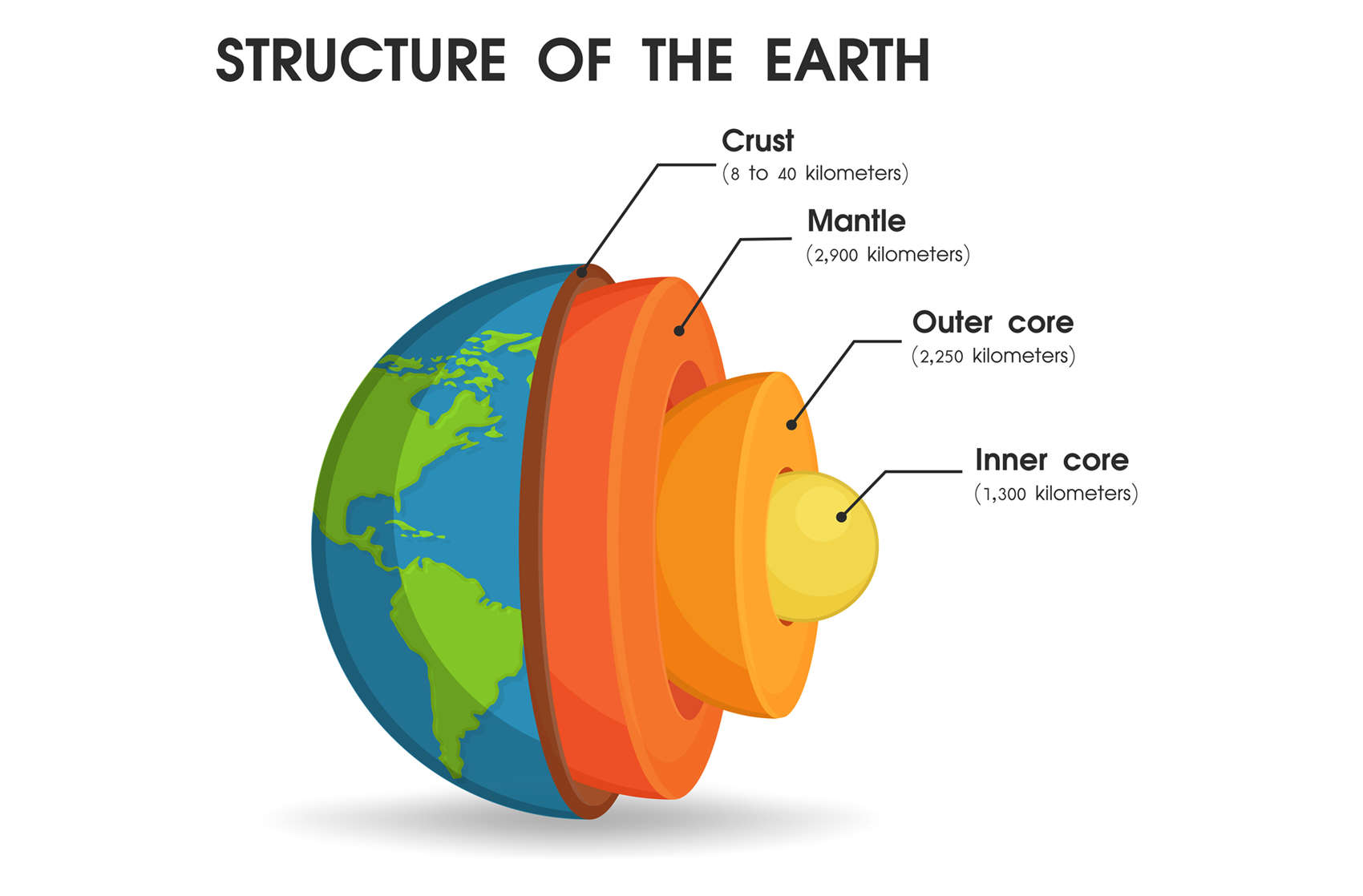Create a free profile to get unlimited access to exclusive videos, sweepstakes, and more!
Weird chemistry is making the Earth's interior cool faster than thought
An unusual mineral deep inside Earth's mantle saps the core's heat away.

Long ago — 4.5 billion years ago, right after the Earth formed — our planet was hot. It formed by essentially getting slammed billions of times by asteroids, and all that energy of impact was enough to keep the Earth broiling.
Eventually heavy elements like iron and nickel sank to the core, and lighter ones rose to the surface. This differentiation created the Earth we see today: An inner, solid nickel/iron core that's nearly as hot as the surface of the Sun; an outer, liquid iron core; the solid, rocky mantle; and the thin crust topping it off.
Over billions of years the Earth has cooled. Though some heat is generated through various processes like radioactivity, that heat in the core leaks out. It warms up the bottom of the mantle, which then transports that energy extremely slowly up to the Earth's surface where it radiates away into space.
That heat transport drives the tectonic activity we see on the surface today: continental drift, seismic activity, volcanoes, and more.
So how rapidly that heat is transported is important. A team of Earth scientists just investigated a key property of that transport, and was shocked to discover that it's far more efficient than previously thought. If they are correct (link to paper), that means that heat is working its way out of the core more rapidly than thought, which in turn means the Earth is cooling significantly faster than previously thought.
Don't panic! This doesn't mean we're about to be living on the shell of a frozen planet. But if true it does mean that models of how the Earth works will need to be rethought.
The key here is the boundary between the outer core and the lower mantle. This region is about 2,900 kilometers down beneath Earth's surface — or about 3,500 kilometers up from the planet's center. Below this boundary the core is incredibly hot, over 4,200° C (about 7,600°F), but just above it the temperature drops rapidly, by over 400C. This is the largest thermal boundary in the planet, and the steepest change in temperature with distance from center (what's called the thermal gradient).
The temperature is high, but so is the pressure. All that rock above pushes down on the boundary layer with a pressure of over a million times air pressure at sea level. This changes the way elements bind together, so the chemistry down there is weird. One of the most common minerals on Earth's surface is olivine, which is magnesium and iron bound up with silicon tetroxide — (Mg,Fe)SiO4. But under Earth's surface where it gets hot and heavy, the structure of olivine changes, and it becomes minerals like ringwoodite, wadsleyite, and bridgmanite.
That last one, bridgmanite, is so pervasive in the deep mantle that it's actually the most common mineral in the planet. And it's one of two minerals, the other being ferropericlase, that dominates the Earth's mantle at the core/mantle boundary. This means that how rapidly the core can cool depends on how efficiently those minerals can transport the heat away.
These minerals can be created in the lab, but it's very difficult, and it's even harder to heat them and subject them to the pressure necessary to measure their ability to transport heat away from the core.
Assumptions for bridgmanite based on lab work have been used in models of the Earth's interior, but until now the actual thermal conductivity — how well heat moves through it — has never been measured at core/mantle conditions.
And that's what the Earth scientist team did. They created bridgmanite in their lab, then squeezed it with a tiny diamond anvil to an incredible 800,000 times atmospheric pressure at sea level, about the pressure at the core/mantle boundary, and then zapped it with a powerful laser to heat it to over 2,300°C, close to the temperature at the boundary as well. This allowed them to measure how well heat flowed through it, and then extrapolate that to the higher temperature at the core/mantle boundary more accurately than has ever been done before.
This was then added to other heat transport methods already known to see how well the core cooled. Comparing the new numbers to previous ones used in models of the Earth's interior, they found the core is cooling 1.5 times faster than previously thought.
Yikes.
Mind you, this doesn't mean the Earth is actually cooling faster than it was before — and yes, this still means global warming is still a thing — but it's more that older models underestimated that rate. That's important.
It means, for example, the mantle is convecting more vigorously than thought. It's a misconception that the mantle is a liquid; it's actually solid, but it can flow, in a way. Heat from below forces material to fill in cracks and voids in the crystal structure of the minerals above — this is called dislocation creep, a term I love — so in essence hotter material rises and cooler material sinks: convection. This flow is incredibly slow, taking a year on average just to move two centimeters, less than the length of the tip of a finger!
That rate depends on how well heat flows from the core, and now we see heat flows faster, which means convection in the mantle is faster than thought as well. The mantle flow is what drives movement in Earth crust, including plate tectonics, earthquakes and volcanoes, which shape the planet's surface.
All of this depends on the heat balance of the planet: How hot the core is, how much heat is still being generated, how well that heat leaks out, and how well it radiates away into space from the surface. These new measurements mean the old models have to be adjusted — perhaps radioactivity is providing more heat than thought, to accommodate the higher transfer out of the core — and then the equations worked out again to see what this means for the mantle deep beneath our feet.
But the effects are very much felt where we stand. From seismic action to the generation of Earth's magnetic field, it all depends on what's going on deep below. So, deep, in fact, that we can't hope at the moment to test things in situ. Our understanding has to come from models based on the physics, and the numbers have to come from the lab. When a number gets changed, so do the values of the equations.
Humans may never visit this region of the planet nearly halfway down to the center except in science-fiction movies, but we can still get an understanding of what's occurring down there. Experiments like this one will help us get there, at least in our physics.





























